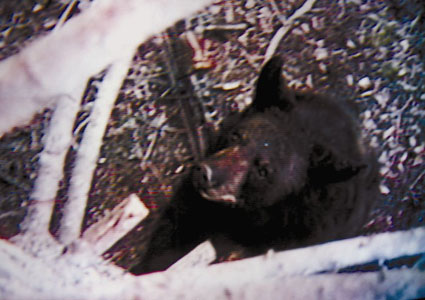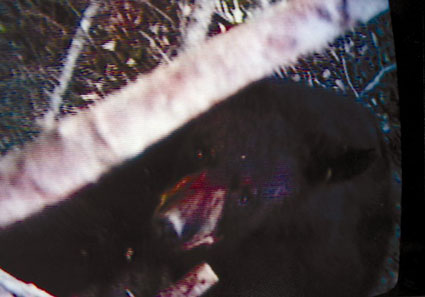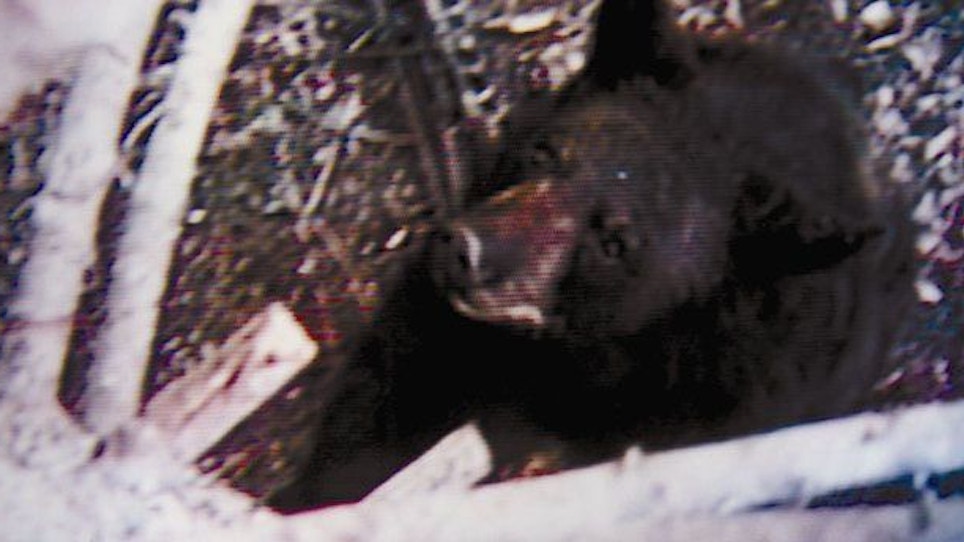<< Previously: Videotaping His Farewell As Bears Charged Up The Tree…
 Practice often simulating real-life situations so that when a bear nears, you won’t compete against your emotions. |
As Steve Davis learned that bear hunting is a mental game. Bowhunting may be 90 percent mental proficiency, but bear hunting is 99 percent…maybe 99.9 percent.
Black bears attack few hunters, yet the possibility exists, and the fear can ruin what should be a grand adventure in a wild environment.
If you plan to bag a bruin or ever thought of giving black bears a try, here’s a plan to make the most of your adventure. The physical preparation will be easy; the mental side takes a bit more work.
First, feel good about hunting over bait. Some folks believe this method gives the hunter an unfair advantage. They haven’t talked with Steve Davis. An arrow through the lungs of a black bear is almost instantly fatal. Yet the vitals of a bear are not easy to access, and hunters must have the patience to wait for the exact angle. Baiting allows the hunter to select large boars (an expendable resource) and enjoy watching smaller animals.
Secondly, develop a practice regime. Speak with hunting friends or your outfitter about weather conditions, the presence of bugs, treestand sites and shooting distances. Buy or borrow a 3-D bear target and practice shooting in a simulated manner. Insects are often a problem and a headnet makes good camouflage and protection. Use a black marker to darken the section in front of your eyes for glare reduction. The final two weeks of practice should include full hunting gear .
Simulate the excitement. Let your imagination run free. Practice alone and add the pressure of solitude—just you and the bear.
Practice judging bear size. Rent as many videotapes as you can on the subject and learn the characteristics of a large bear. Experienced hunters mark a tree for height or lay a pole for length as a comparison object. Davis’s outfitter was wise in asking hunters to videotape bears their first night in camp. All four men were eventually successful on mature animals.
 Prepare for solitude. Radio technology means that you can be in contact with your guide or friends as little or as much as needed. Take a daypack with a good light, extra batteries, compass, and all survival gear. You need to feel safe and confident on your hunt so that you can concentrate on the bear.
Prepare for solitude. Radio technology means that you can be in contact with your guide or friends as little or as much as needed. Take a daypack with a good light, extra batteries, compass, and all survival gear. You need to feel safe and confident on your hunt so that you can concentrate on the bear.
Prepare for patience. Bear hunting is primarily a waiting game and the more still you can be, the better. Take a soft cushion and hang your bow where it can be reached with little movement. Wear a safety harness with which you feel comfortable and secure. Write notes on the back of your bow limbs about shot placement, shot angle, and form.
Replace “fear of bears” with “respect for bears.” As you become at greater peace with bears and their environment, enjoyment of the hunt increases exponentially. In most cases, black bears don’t stalk humans for food and the sight or scent of man usually invokes flight. Sometimes, the bear’s territorial instincts are infringed and the bear mock charges or becomes aggressive.
The fear of facing a bear in the dark is very intimidating. Although evening hunts are universally the norm, other times of the day can be productive. Because guides often work until midnight or later to gather hunters, gear, and bears, the prospect of an “early morning” hunt is not appealing. In commercial hunting camps, some bears visit baits in early morning because hunters are never there. Voila! Also, bears often learn the baiting routine and show up as soon as the guide leaves. This can provide action in the middle of the day.
Bear pursuit is real adventure. You compete against your emotions as much as the quarry. Practice will condition your muscles, yet the mental side takes concentration, willpower, and the desire to succeed.






